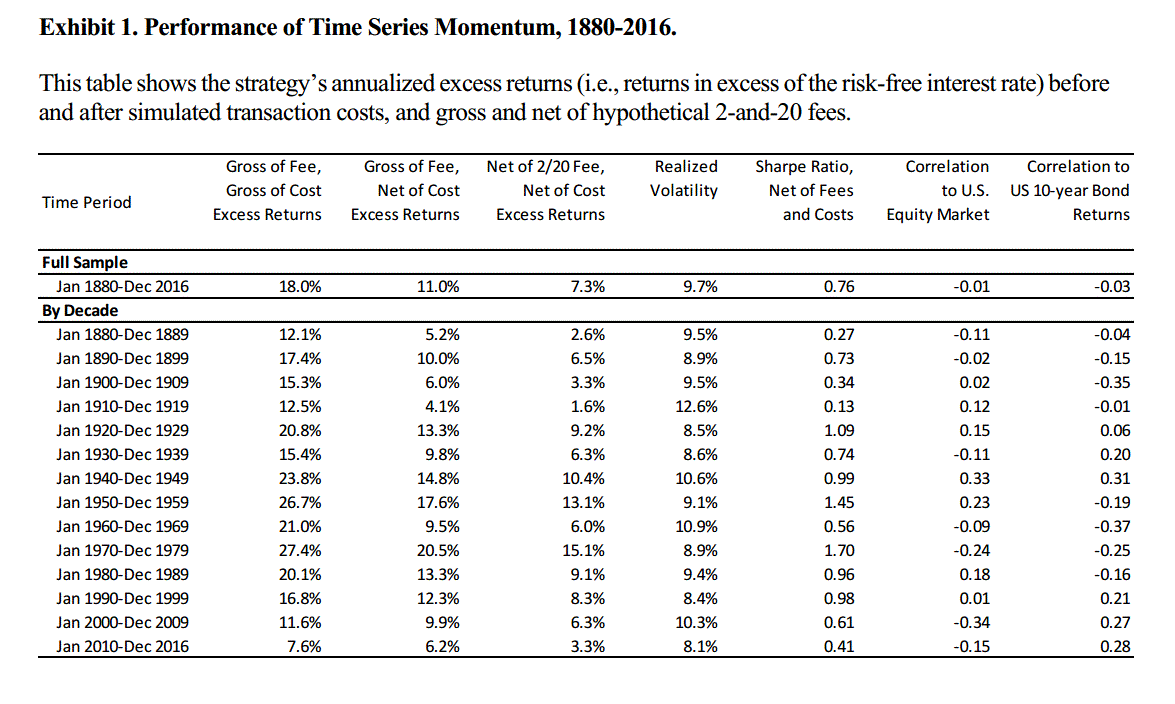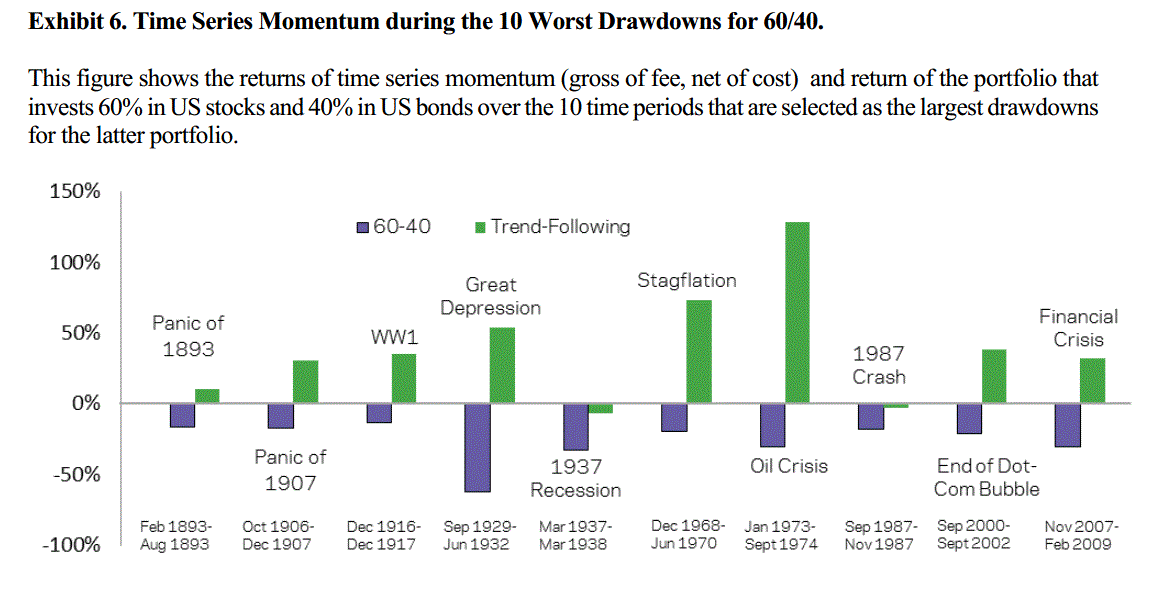AQR recently updated its paper A Century of Evidence on Trend Following and whilst the updated hasn’t changed the basic conclusion of earlier versions it is worth unpacking some of the main point of the paper.
The paper in its introduction makes an immensely important point that is lost on most –
As an investment style, trend following has existed for a very long time. Some 200 years ago, the classical economist David Ricardo’s imperative to “cut short your losses” and “let your profits run on” suggests an attention to trends. A century later, the legendary trader Jesse Livermore stated explicitly that the “big money was not in the individual fluctuations but in … sizing up the entire market and its trend.”
The thing I always find fascinating about trading, markets and people is that everyone is trying to reinvent the wheel. I understand this compulsion after all a new wheel sells but the basic technology of trend following and trading in general is as seen above centuries old. Yet these simple ideas somehow go by the wayside. Granted our own psychology gets in the way of following Ricardo’s simple missive of letting our profits run and cutting our losses short as we find being in the action more compelling than actually trading correctly. But even professionals have trouble following this rule as evidenced by the number of institutions who hold stocks as they grind their way into the ground.
In assembling the material for this paper AQR looked at the monthly returns for some 67 markets which were made up of four major asset classes – 29 commodities, 11 equity indices, 15 bond markets and 12 currency pairs. Which is no mean feat when you are going back a century. The results of this analysis can be summed up in few charts. To test the notion of trend following they adopted a simple strategy consisting of a 1- month, 3-month, and 12-month momentum strategy for each market. In this instance momentum does not refer to an indicator but rather price movement. A long position was taken if the pat return over the look back period was positive, conversely a short position was taken if the return over the look back period was negative.
It’s a simple if it’s going up buy it, if it’s going down sell it strategy.
Position sizing was volatility based and the portfolios were rescaled monthly to make certain that the portfolio hit an annualised volatility target of 10%. Fees and charges were included in the testing.
Take home points
Trend following was profitable in every decade since 1880 as shown in the table below.
Trend following beats traditional 60/40 portfolios. The chart below looks at drawdowns during periods of financial stress. As can be seen trend following does very well during these periods. The authors posit that this occurs because of the simple ability of trend following to point themselves in the direction of the prevailing trend as dictated by Livermore’s dictum of deciding what the overall trend is.
Trend following produces outsized gains when markets are moving. In developing a trading system traders often simply look at the overall return of the system and if it is positive then they are happy. However, of equal importance is how those returns are derived. It has been my experience that the majority of returns are generated in a cluster of individual returns, that is the entire portfolio doesn’t do well but rather pockets of the portfolio do extremely well and drag the average up. In trading you want a strategy that produces outliers when the opportunity exists – you have to be a pig when the opportunity to be a pig presents itself.
The chart above illustrates this phenomena – the chart looks a little complex but it is only measuring two things. The performance of the US stock market on the horizontal axis and the performance of the momentum strategy on the vertical axis. The green line curving a path through the dots is known as a smile and it shows that trend following produces its best returns when markets are moving. This harks back to the earlier point of being able to take advantage of market moves when they occur.
Trading is a simple profession since it can be summed up in three ideas. If it is trending up over the time frame you are trading you buy it.If it trending down over the time frame you are trading you sell it. Dont bet the farm. It is hardly rocket science yet despite this our very nature more often than not defeats us despite the evidence that it shouldn’t.










The last para is the gem of the article.